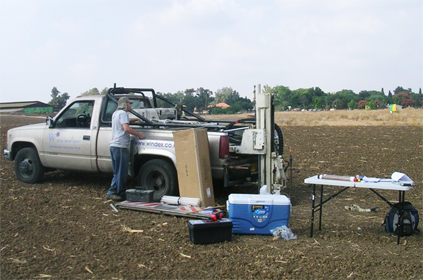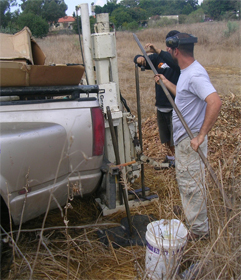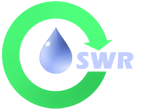Sustainable Water Resources
SWR Research Example: Israel
Impact of Irrigation on Subsurface Water, Salt, and Nutrient Fluxes, Israel
A site in the eastern part of the Israeli Coastal Aquifer was chosen for assess the impact of irrigation on subsurface water, salt, and nutrient fluxes. The soil profile at this site consists of 3 to 6 m of heavy clays that gradually changes to loam to sand at depths of 8 to 10 m. This site is on the lands of Kibbutz Revadim where field crops include mainly summer corn and winter wheat. These fields are currently irrigated during the summer dry season with treated wastewater. In the past year an agricultural experiment that compares growth parameters and crop yields in plots with different fertilizer applications, was conducted at the site by Dr. Pinchas Fine. We drilled 8 boreholes and collected soil cores from plots fertilized by: 1) composted sludge. 2) commercial fertigation. 3) no fertilization, and 4) a nearby never-cultivated plot. Two boreholes of approximately 10 m depth were drilled in each of the four treatment-plots. Preliminary results show that there was extensive flushing of salts from the top 9 m under the irrigated plots. Nitrate profiles show a build up in the top 3 m in the non cultivated plot, whereas no such build-up was observed under the irrigated plots. Some differences between the various fertilizer treatments are observed in the chloride and nitrate profiles.

Figure 1. Drilling with a Geoprobe in fields of Kibbutz Revadim during October 2008 before the seeding of the winter crop. (click to enlarge)

Figure 2. Drilling in a nearby non-cultivated site (click to enlarge)
Fore more information, please contact:
Daniel Kurtzman
Robert Reedy, Bureau of Economic Geology
Bridget Scanlon, Bureau of Economic Geology
